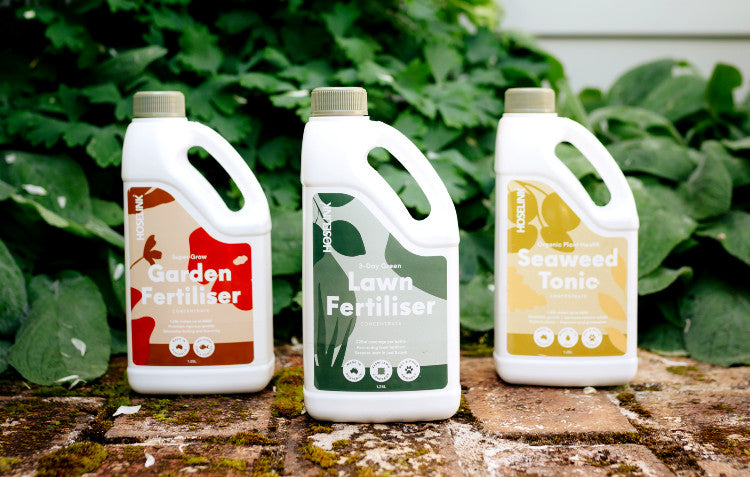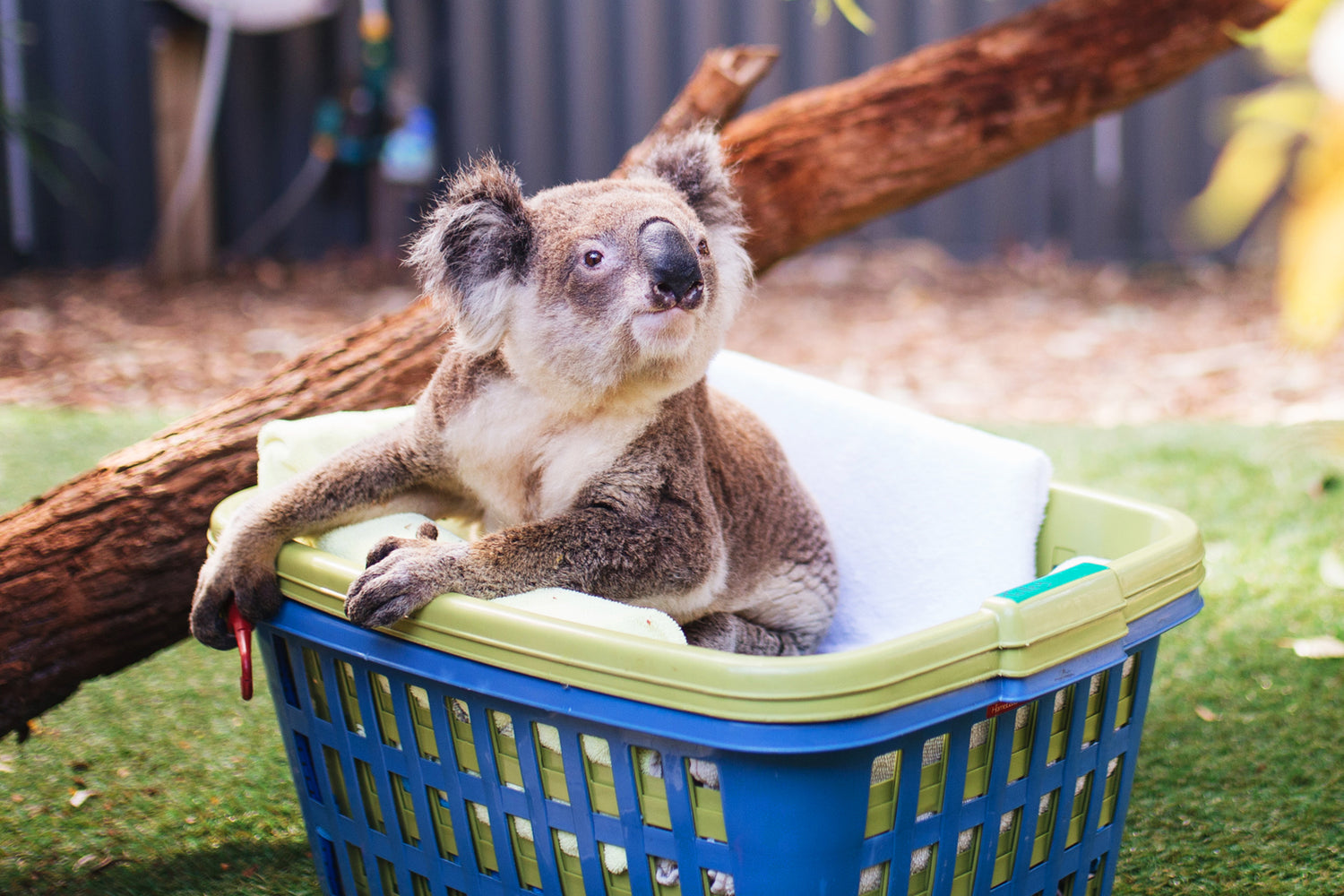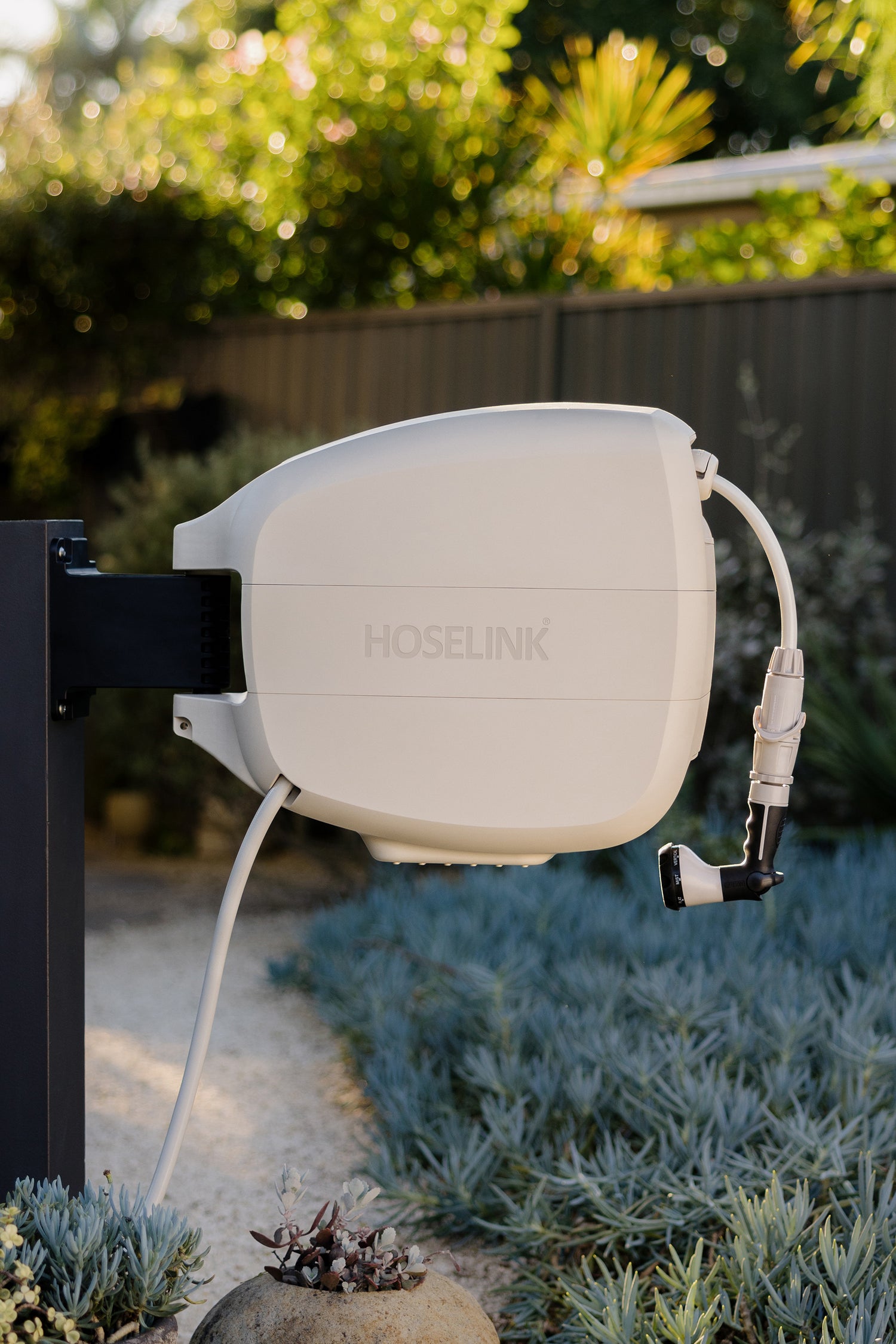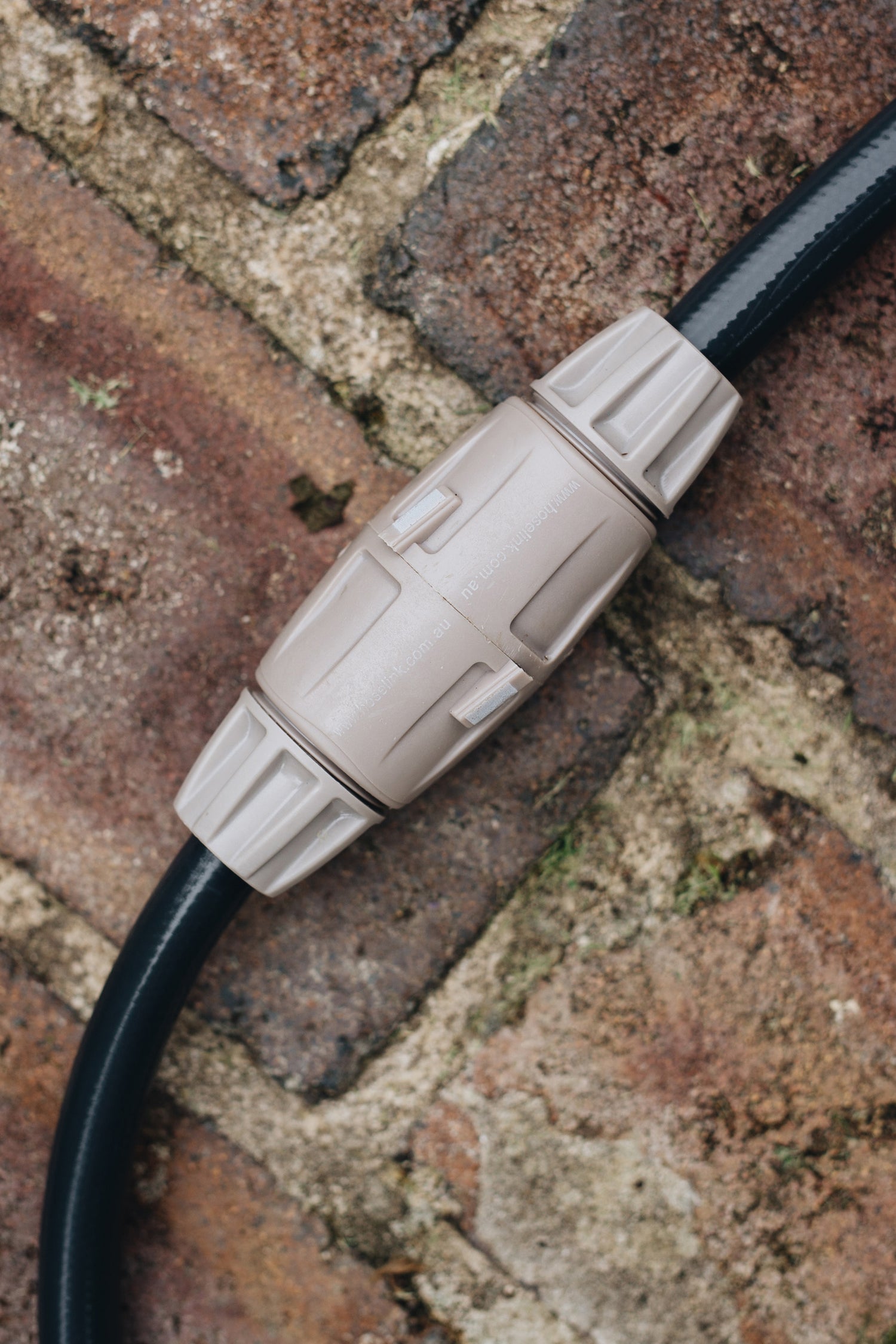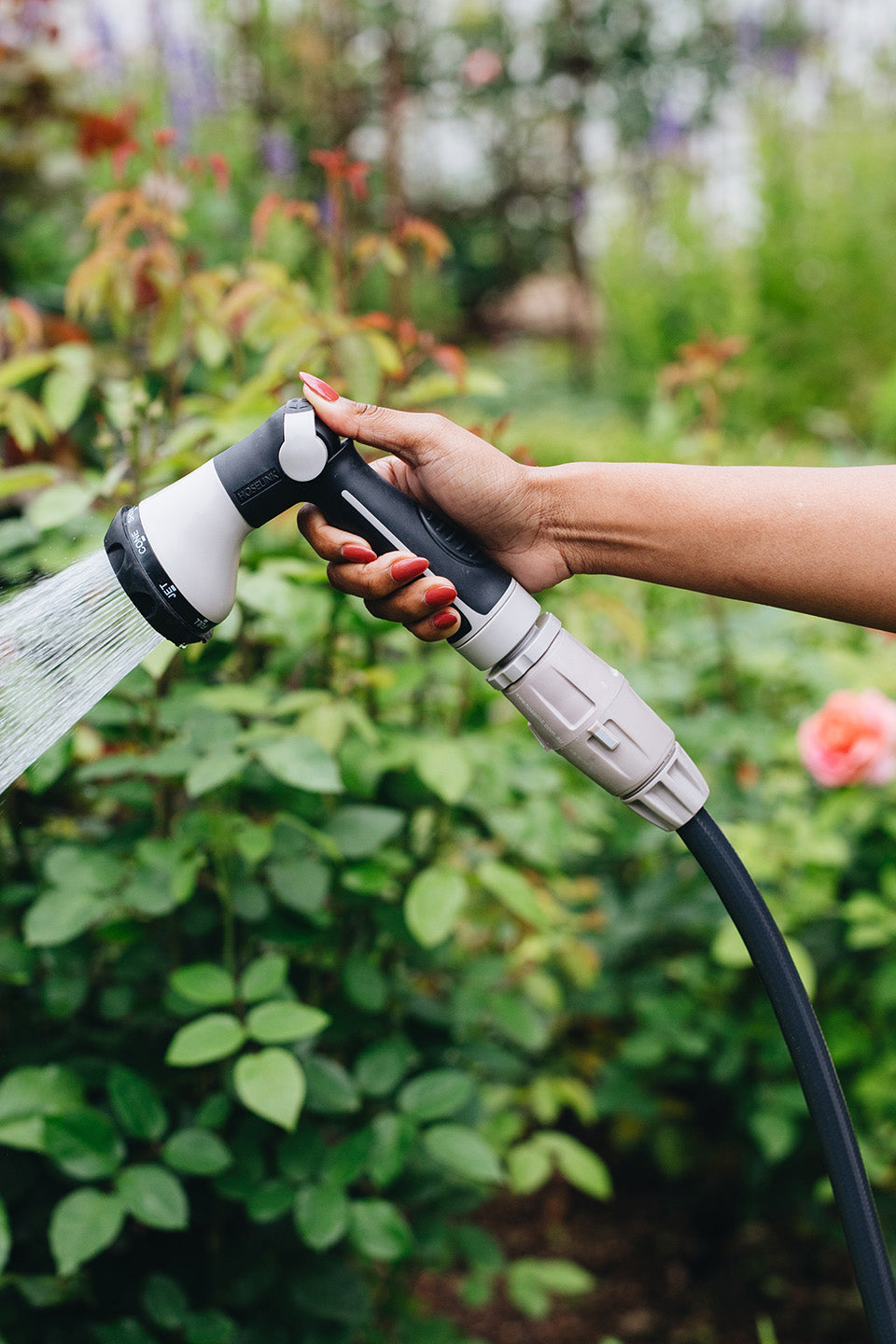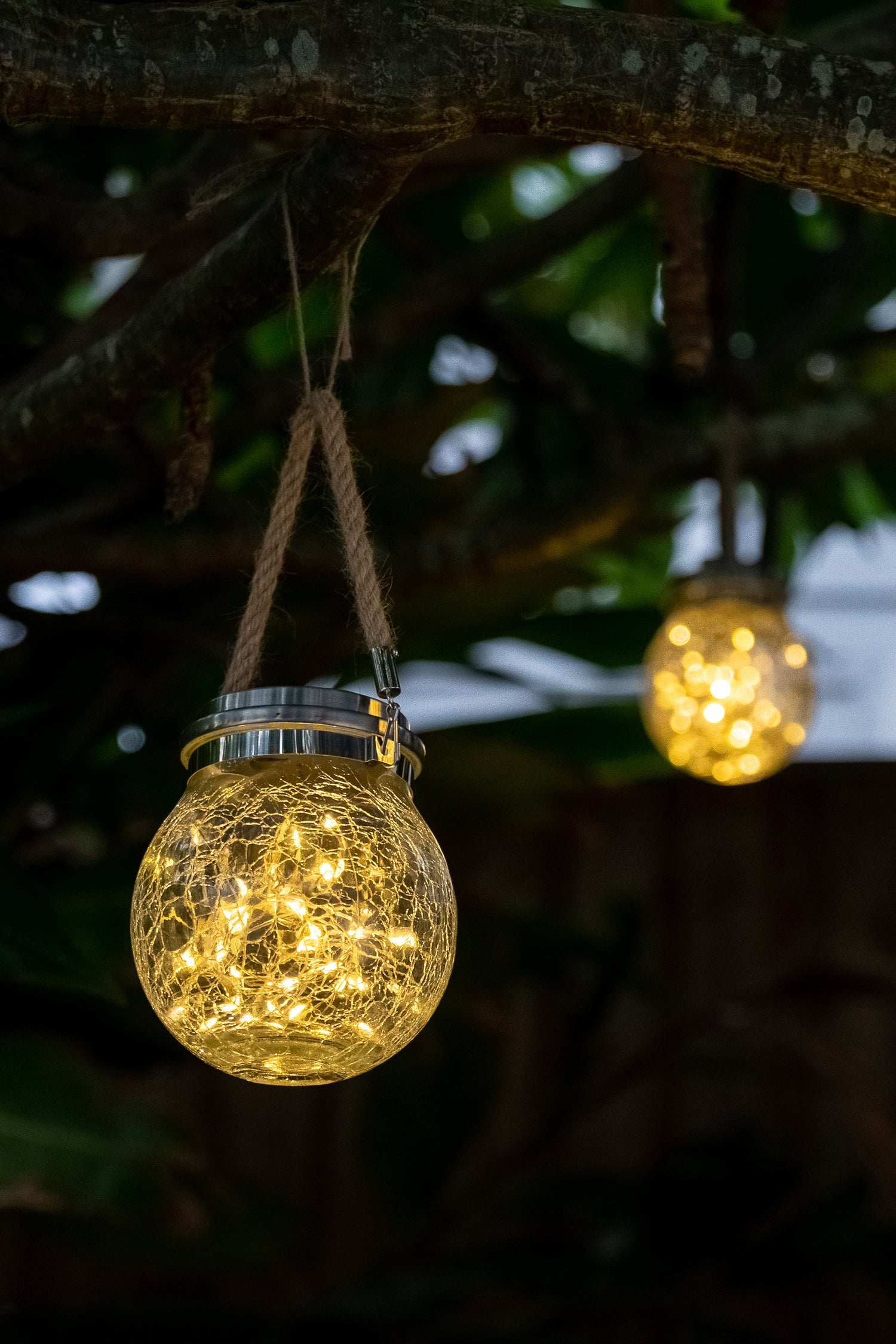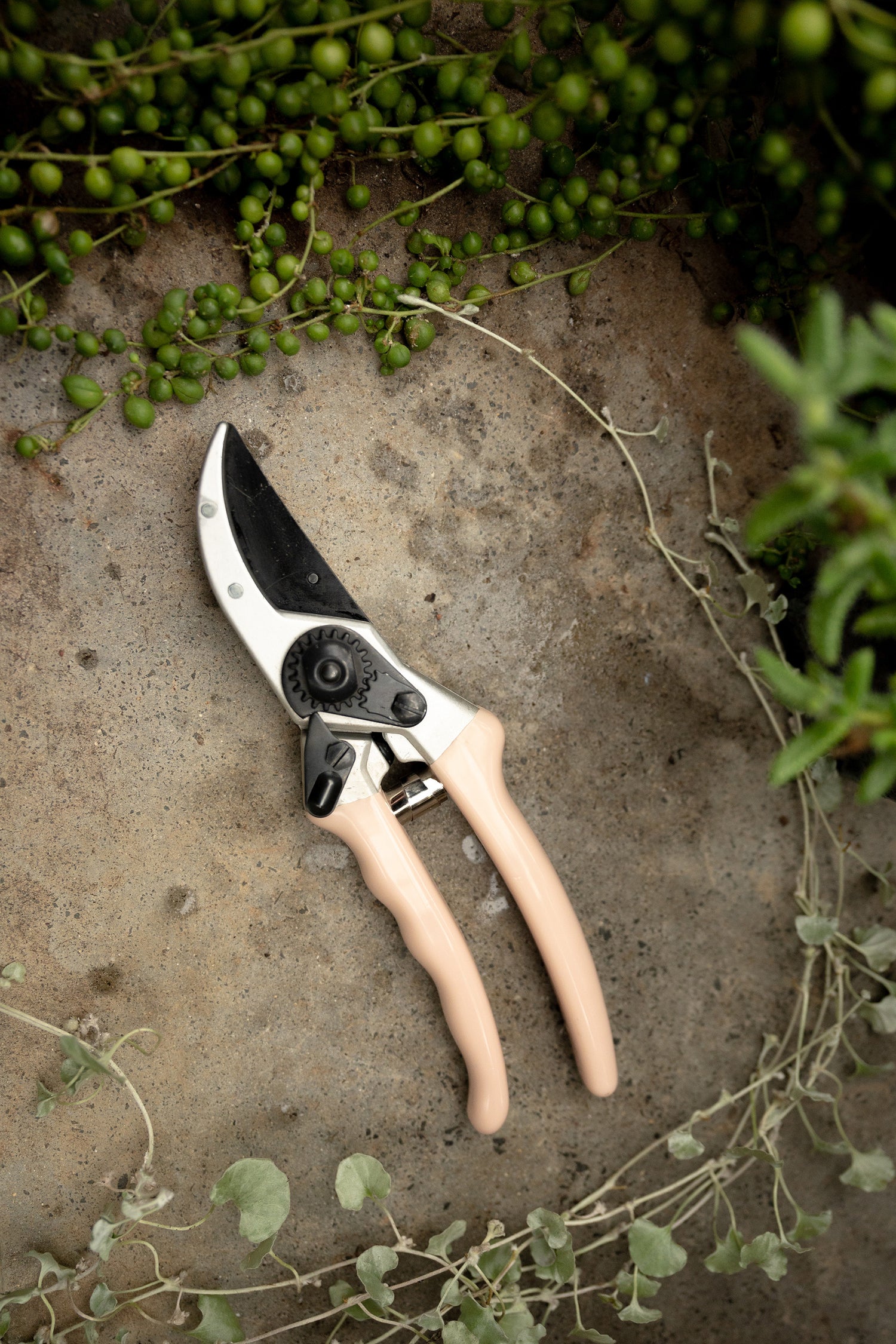Spring heralds the arrival of a new growing season and with it the need to nurture your garden ready for a summer of glorious flowers and vibrant foliage.
Composting, mulching, fertilising, tidying… there is a long list of to-do jobs in the backyard at this time of year, but perhaps one of the most bewildering tasks is fertilising. Over time, plants absorb all the nutrients in the soil, so require some of that goodness to be replenished. That’s where fertilisers and tonics come in. Fertilisers feed whilst tonics repair.
We’ve put together a simplified guide to plant treatments to take the confusion out of fertilising this spring.
What is garden fertiliser?

In a nutshell, fertiliser optimises the growth, productivity and overall health of your plants by supplying the soil with the essential nutrients plants need to thrive.
You will see the letters N, P and K on all fertiliser products. This stands for nitrogen, phosphorus and potassium and these are the three primary nutrients required for healthy plant growth. Together these elements help to promote green, leafy growth (nitrogen), good root growth and plant development (phosphorus), and quality flower and fruit production (potassium). The ratio in which they appear will give you an idea as to what the product is designed to do. For example, lawn fertiliser will be much higher in nitrogen than potassium, to help encourage green, lush growth.
The NPK ratio is a key part of the label as it gives you a simple breakdown of nutrients. This is important as many native plants, for example, cannot tolerate high levels of phosphorus, so you need to find a fertiliser with little to no phosphorus. Or, for fruiting and flowering plants, it’s more important to have higher levels of phosphorus and potassium and a low level of nitrogen.
NPK is not all that’s in a fertiliser formula; there are other minor and trace elements used in smaller quantities, such as calcium, sulphur and iron, which all play an integral role in plant growth.
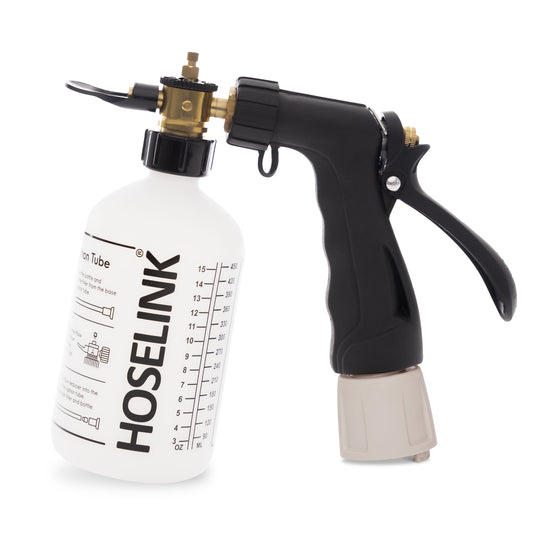
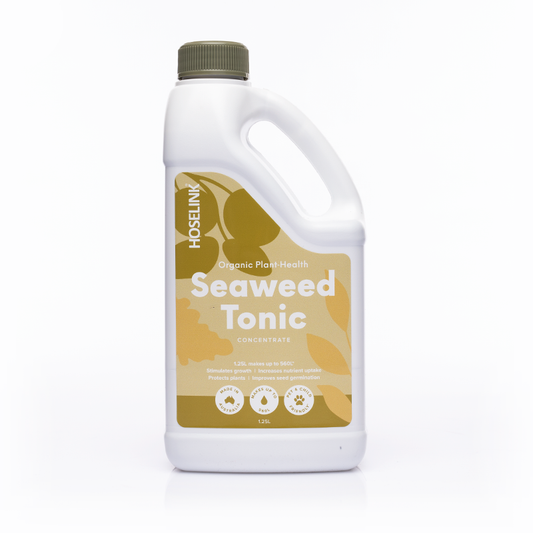
Organic Plant-Health Seaweed Tonic Concentrate
When should I apply it?

Your plants don’t need to be fed as often as we do, and over-feeding can actually cause damage, so getting the timing and levels right is important. But it can be a confusing and slightly daunting task to undertake as the type of fertiliser and frequency of application will depend on the species of plant you are growing, whether they’re native or not, the soil type and so on.
Generally speaking:
• Potted plants need to be fertilised throughout the year, as often as every eight weeks, as the potting mix the plants sit within contains little nutrients and, given the confined space, nutrients will deplete more quickly than in a garden bed.
• If you’re growing edibles in the backyard, regular fertilising will prove beneficial, particularly in summer when your veggie patch will appreciate a feed every 1-2 weeks.
• Flowering plants will need a regular application for a more prolific blooming cycle, whilst native plants may not need fertilising at all depending on the soil quality.
• One application of fertiliser at the beginning of the growing season works well for lawns, trees, shrubs and climbing plants.

Organic Plant-Health Seaweed Tonic Concentrate

Organic Plant-Health Seaweed Tonic Concentrate
Quick takeaway
| What is fertiliser? | Fertiliser contains essential nutrients formulated to enrich soil and optimise the growth, productivity and overall health of a plant. |
| When should I apply it? |
Application frequency depends on the type of plant. Potted plants, edibles and flowers need fertilising as often as every 2-8 weeks, whilst lawns, trees, shrubs and climbing plants will be happy with fertiliser once or twice a year. |
What is seaweed tonic?
A plant tonic is a powerful pick-me-up for weary plants or young seedlings that need strengthening. A tonic works quite differently to fertiliser as it is formulated to help your plants fight pests and disease, grow stronger roots, improve seed germination rates, promote early flowering and enhance the overall health of a plant.
If your plant is sick, experiencing transplant shock or is stressed from over/under watering, plant tonic is the perfect cure. It will also give freshly sown seeds or newly emerged seedlings a boost to help them grow up strong and healthy.
Hoselink’s Plant Tonic features seaweed, an all-round superfood for your garden. Seaweed has 60 trace minerals and nutrients including nitrogen, potassium and phosphate that will set your soil humming with life in no time. Among its health-boosting properties, seaweed stimulates the microbial fungi in the soil, increases soil structure, aeration and moisture retention, and assists in defending plants from soil-borne diseases.
When should I apply it?
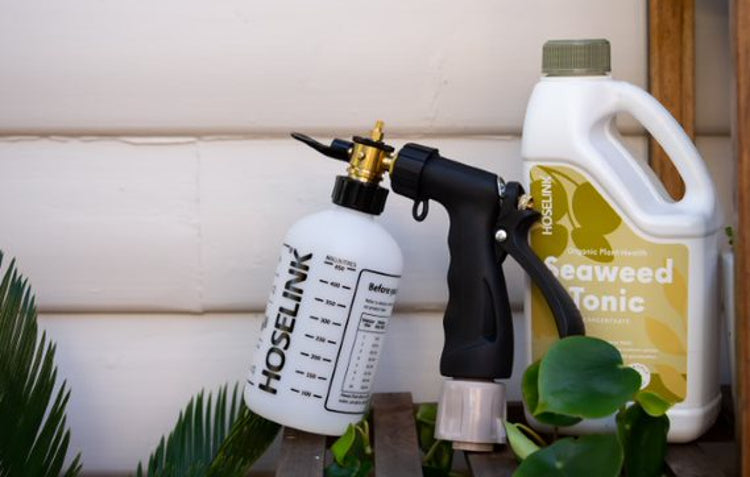
Application of seaweed tonic can be a little more ad hoc and more frequent than a general garden fertiliser.
Seaweed tonic can be applied both to the soil and directly to the leaves of a plant for absorption when correctly diluted. It’s important to note fertilisers and tonics should not be applied in direct sunlight and in temperatures over 38 degrees. Seaweed tonic can be used 1-2 times per month during active growing periods, or as your plants require. Seaweed Tonic can also be applied during the winter months.

Organic Plant-Health Seaweed Tonic Concentrate

Organic Plant-Health Seaweed Tonic Concentrate
Quick takeaway
| What is plant tonic? | Tonic is panadol for your plants formulated to pick them up when they're sick, need strengthening or to give newly sown seeds and young seedlings a boost. |
| When should I apply it? |
Seaweed tonic should be applied 1-2 times per month during growing periods, or as your plants require.
|
What is Lawn Fertiliser?

Lawn Fertiliser is a liquid concentrate that acts as a remedy and wellbeing liquid for your lawn. It includes all necessary nutrients your lawns love, such as nitrogen, magnesium, iron and potassium - think of it like a multivitamin for your grass!
To help with water retention, potassium fulvic acid has been added to the formula, this also assists by allowing the formula to reach all critical areas of the lawn and help the roots with absorption.
With regular application, the lawn fertiliser will help your lawn to have consistent lush growth year-round as well as reduced stress in wild weather conditions. The fertiliser also helps the lawn's root system develop and condition the soil for the healthiest possible lawn.
When should I apply it?

Lawn Fertiliser should be applied to your lawn just after mowing at anytime during the growing season. You will start to see the effects in as little as three days! Before application, make sure there is little possibility of rain or a 30-degree temperature in the days following application. Allow 6-8 weeks between applications for best results.
Quick takeaway
| What is lawn fertiliser? |
Lawn Fertiliser helps your lawn stay at its healthiest both above and below ground by supplying it with the right nutrients and minerals. |
| When should I apply it? |
Lawn Fertiliser should be applied shortly after mowing, when there is no rain or hot temperatures predicted in the following days. Repeat applications can be done 6-8 weeks after. |
What is soil wetter?


Soil wetter is a surfactant that helps to retain moisture in the soil by reducing the surface tension of the water, so it is more easily absorbed.
A soil wetting agent is used to treat hydrophobic soil – dry soil that repels water, causing it to collect on the surface of the soil rather than penetrate through. This is a common issue with sandy soils, potted plants and areas affected by drought. If using organic matter in your soil, or a potting mix, the soil particles can develop a waxy coating, which repels water. If you find when watering your plants that liquid pools on top of the soil rather than being quickly absorbed, then you could have hydrophobic soil. The good news is this problem can be reversed with the use of a soil wetting agent.
Hoselink’s Soil Wetter can be applied to indoor and outdoor pot plants as well as garden beds and can be used in conjunction with our Plant Health Tonic and fertilisers. The unique formula lasts for 12 weeks in the soil and will help the soil retain moisture, reducing the frequency you need to water your plants, saving precious H2O.
When should I apply it?

Soil Wetter lasts for approximately 12 weeks in the soil and is ideally applied before you go on holiday, in the summer months when conditions are usually hot and dry, or as you notice your soil is hydrophobic.
Quick takeaway
| What is soil wetter? | Soil wetter helps to retain moisture in the soil by reducing the surface tension of water, allowing it to be better absorbed. |
| When should I apply it? |
Soil wetter can be applied every 12 weeks, or as you notice your soil is hydrophobic. |
Hoselink’s range
Hoselink’s tonic, soil wetter and natural fertilisers come in liquid form, which means they can be applied directly to the soil and will be quickly absorbed. This is known as a fast-release formula. All our formulas are concentrated and require diluting with water, which makes them excellent value for money as they last for longer. We are proud to make the entire range right here in Australia.
3-Day Geen Lawn Fertiliser – Health and wellbeing remedy suitable for all lawn types
Super Grow Garden Fertiliser – Food to help your plants grow
Plant Health Seaweed Tonic – Nature’s panadol for when your plants are weak or sick
Organic Soil Wetter – Moisturiser for your soil
Fertiliser Spray Mixer - Hoselink's own variable spray mixer bottle for diluting fertiliser and weed sprays
We have also developed a Fertiliser Spray Mixer bottle designed to work with Hoselink's unique no-burst, no-leak fittings for a reliable hose-on connection. The bottle quickly and easily connects to your Hoselink-fitted hose for a fast and convenient way to dispense your fertiliser, tonic, soil wetter or weed solution on to your garden. The built-in selector dial draws a measured amount of fertiliser up from the spray bottle and mixes it with water flowing through from the sprayer. Dilution rates are printed on the labels for each of our products in the range.

